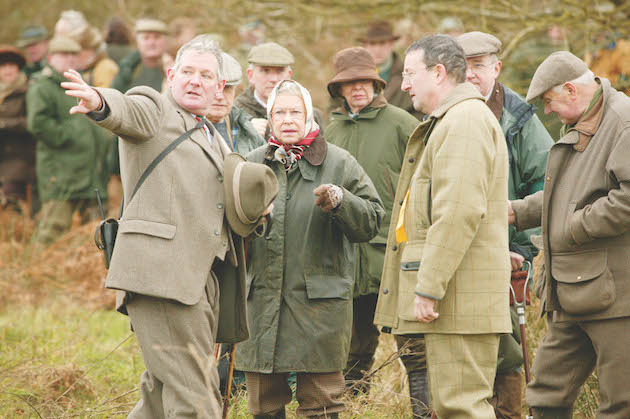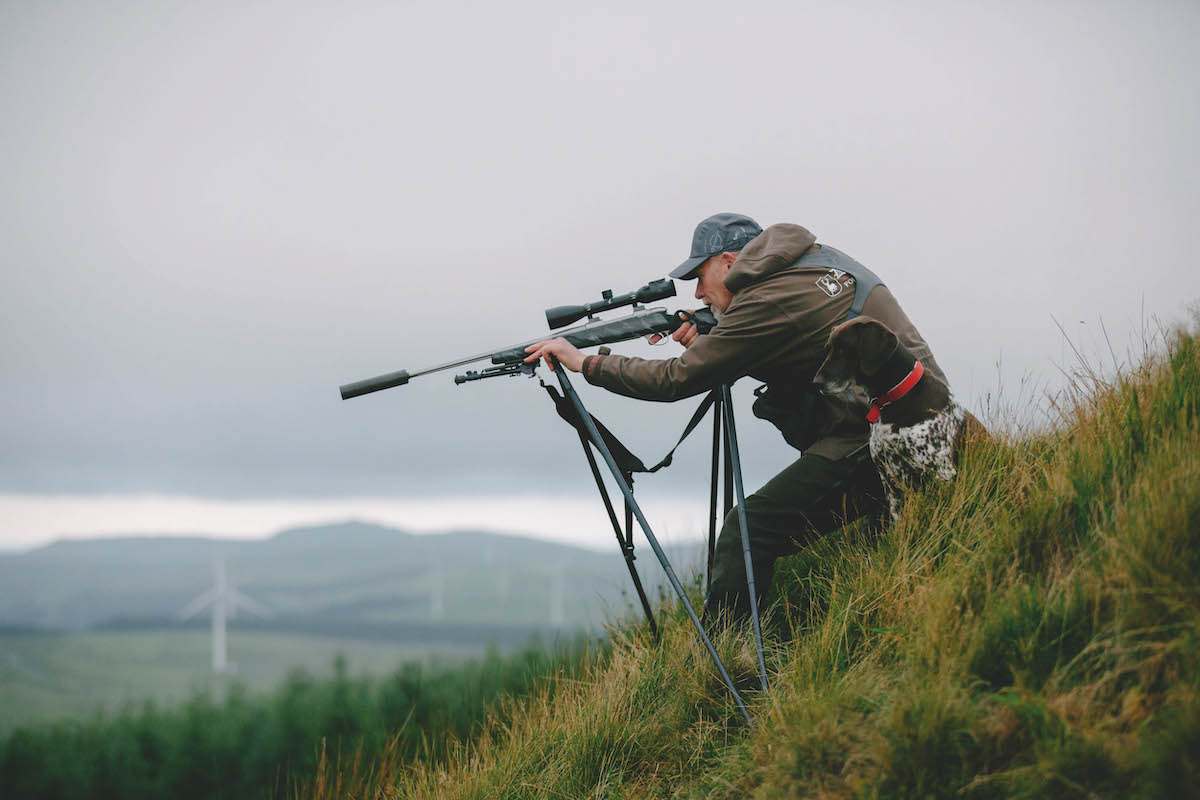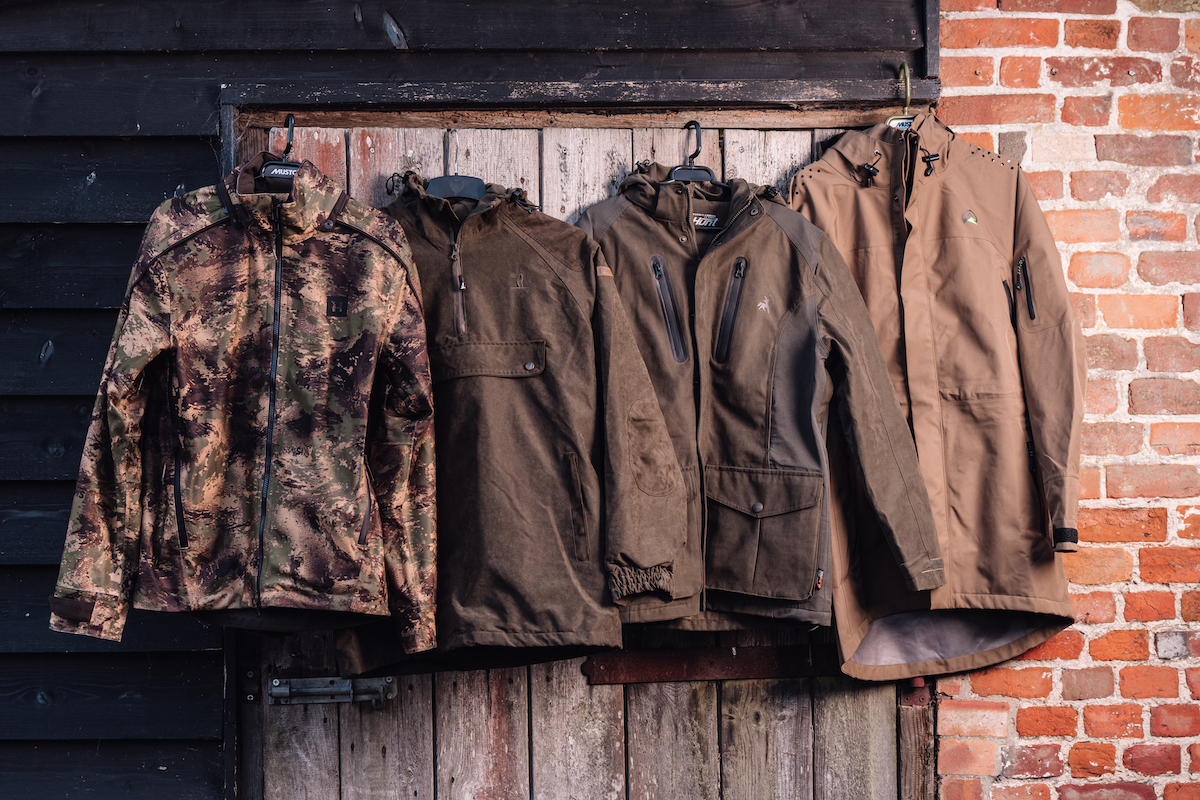Why tweed is the original performance clothing
The signature material for fieldsport fatigues is now an internationally recognised brand. Patrick Laurie looks back at the origins of tweed.

Tweed is the signature fieldsports fabric
Ten years ago, I was invited by a Scandinavian clothing brand to cover the launch of a new range of shooting clothing. The grand unveiling would take place at a sporting lodge in Sweden, and there would be an opportunity to trial the clothing during a day’s driven wild boar shooting. Everything was paid for, and the agent awaited my reply with enthusiasm. (See this list of the best tweed jackets.)
I was minding my own business in a field of cows when the email came through. Invitations like this never come to me, and I had to wonder if there had been some mistake. Decked out in a boilersuit and black farm wellies, my work is usually focused on practical conservation for wild game, and my tastes lie very much at the muddy end of the sporting spectrum. Fortune rarely smiles upon me in this way, but I had been writing for Shooting Times for several years and my name must have got mixed up with another, more refined contributor. I replied that I was certainly interested but surely the invite would more suited to somebody better versed in matters of style and fashion. I heard back almost immediately; there had been no mistake – “Patrick, we look forward to meeting you in Stockholm.”
The event turned out to be one of the strangest and most entertaining weekends of my life. As part of a team of European sporting journalists, I was treated to some top-level Scandinavian hospitality in a beautiful old mansion where the clothing was to be revealed in the manner of a fashion show. Schnapps flowed freely and I could hardly believe my luck as I was allocated a seat beside the catwalk in a grand, immaculately decorated drawing room. Models emerged to pout and swagger, and the Master of Ceremonies provided a commentary on the clothing as it was paraded back and forth for our delectation. My fellow journalists began to scribble in their notebooks. I had forgotten to bring any paper, and I didn’t even have a pen. Feeling like I was well out of my depth, I tried to cover my tracks by nodding wisely.
It goes without saying that Scandinavian hunters have their own sense of taste. We were shown full body suits with ‘tactical’ reinforcements — some of the models looked like astronauts or Navy SEALs. Many of the jackets were so heavily decked out with loops and buckles that they might have doubled as picnic hampers, and I could only imagine how my friends in Scotland would have laughed if they had seen me wearing some of that clobber. The show drew to a close and I began to notice one consistent theme throughout all the clothing we had been shown: tweed. Every piece of kit was made from an innovative brand of waterproof fabric that had been printed to look like tweed. The Master of Ceremonies explained that this was a nod to ‘sporting heritage’, and I found that intriguing. (Read our list of the best tweed shooting jackets.)

Hi-tech fabrics like Deer-Tex incorporate tweed patterns
Tweed on test
I’ll confess to having had a pounding head the following morning when I was given a ‘tweed’ jacket to test. We plunged into the thickness of a deep forest where boar abounded and my borrowed .308 rifle boomed cheerily with delight and bonhomie. It turned out that my new jacket was perfectly good but it set me wondering about the ‘heritage’ value of tweed, particularly in a foreign country where there is no real history of the fabric.
To me, tweed is a quintessentially British product that speaks of rough hill country, natural materials and hearty tradition. It is an indispensable component of British fieldsports, and the shooting community is so closely aligned with the stuff that our enemies often use it to mock us. Many people outside the sporting world often struggle to understand why tweed is so important, but like so many aspects of our sporting heritage, everything becomes clear when you see a day’s shooting in action. Tweed, like side-by-side shotguns and heavy-headed labradors, tie us back to an older way of doing things. Shooting takes place in a countryside that hardly makes sense without an idea of history and culture, so it’s no surprise that we should return to the past, even if that means we have to take a slightly roundabout trip to get there.
Tweed was first woven in Scotland to meet a demand for tough, woollen fabric. Its name stems from a mistake made by a merchant in London who misread the original Scots description of ‘tweel’ (twill). Perhaps the Londoner had heard of the River Tweed and assumed that everything in Scotland was more or less the same, but the name stuck and the fabric skyrocketed into popularity with the huge upsurge of interest in countrysports during the 1840s. Grand tweed mills began to emerge in the Borders and down into Northumberland where sheep were being kept in huge abundance. In the Outer Hebrides, fine and beautiful tweeds were painstakingly produced to the highest possible standards — it should be no surprise that Harris Tweed is now an internationally respected brand name, and weavers from the west coast of Scotland are rightly celebrated for their skill.

When rain begins to fall, tweed appears to be waterproof.
Tweeds were produced in an enormous range of colours and patterns, some of which were so garish and bright that they could almost be called tartans. Others used traditional dyes to create more sombre tones that blended into the rural landscape. These were early moves towards camouflage, and there was a demand to produce ‘estate tweeds’ for stalkers and keepers based on the natural colour and characteristics of local conditions. Grey tweeds were suitable for people working in rocky hills and scree, while green or brown tweeds were perfect for heather moors. Shooting folk liked the warm, hard-wearing nature of the stuff. It soon became so common and readily available that most people in the northern countryside possessed tweed clothing of some sort, even if it was just a flat cap.
Anyone who has stood in tweed for an extended period during wet weather will appreciate the advantages and drawbacks of the stuff. When rain begins to fall, tweed appears to be waterproof. A light shower is easily cast aside by a heavy pair of plus fours, but prolonged rain will inevitably begin to soak through.
Wool soon becomes heavy and cumbersome in a downpour, and it has a strange tendency to expand when wet so that even the best-fitting breeks seem to melt and sag in the most unflattering fashion. But even when soaked through, tweed is always warm and relatively wind-proof. Some textiles cling to your skin when they get wet and the effect can be disastrously chilling. Tweed may be soaking and might take days to drip dry after a good soaking, but it is always comfortably cosy.

I still wear my grandfather’s plus fours
When I expect cold weather and bad winds on a shooting foray, I still wear my grandfather’s plus fours, which were made for him in Edinburgh in the 1930s. They fit me perfectly and you would hardly know that they were almost 90 years old. I carry my other grandfather’s shotgun over my arm, and that is part of the pleasure of our sport, which aligns so closely with many of the traditions and customs of family, community and landscape.
[collection:name=”small”]
Perhaps we should be flattered that Swedish designers take inspiration from British tweed. As the only British journalist at that fashion show, I was quietly proud that ‘my’ tweed had been recognised and celebrated for its heritage value, a thousand miles from home. I recoiled from those trendy shooting suits at first, but they made more sense to me as rain began to fall the following day when I was trapped in a raised shooting stand waiting for wild boar to emerge. I might prefer my tweed made in traditional wool, but it does make sense to stamp that same pattern on something a little more lightweight and waterproof.
Shooting and tweed have evolved together over the past two centuries, and if the future lies in hi-tech fabrics then it surely makes sense to bring something of tweed along with us.








